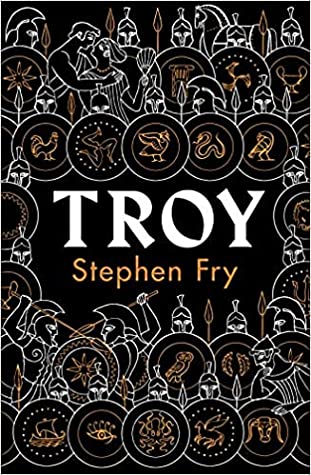Book: Troy
Author: Stephen Fry
Publisher: Michael Joseph
Price: Rs 699
Reinterpretations and retellings of epics are all the rage. They come in many forms. In Ransom, David Malouf turned a single episode — Priam’s recovery of Hector’s body from Achilles — into a taut novel. Alice Oswald’s Memorial made for a profoundly moving catalogue of the Iliad’s descriptions of individual deaths. Then there is the revisionist approach — Madeline Miller’s Circe, Pat Barker’s The Silence of the Girls and Natalie Haynes’s A Thousand Ships — that tries to amplify marginalized voices. Stephen Fry, however, would be more at home with the likes of Edith Hamilton, Robert Graves and Roger Lancelyn Green — writers who seek, in line with the great oral tradition, to pass on enduring myths to a younger readership.
But Fry combines the best of both worlds — while remaining honest to the original saga, his narrative style is typically debonair, erudite and urbane. Fry’s gods and heroes exchange banter in an endearing style, echoing his posh but colloquial metropolitan cant. Fry does attempt to tone down his characteristic deadpan humour here, perhaps in deference to the fact that retelling the tale of Troy demands a certain gravity. But he does not entirely dispense with dark humour. After Menelaus wins the hand of Helen and Agamemnon finds himself sizing up her sister, Odysseus nudges him saying, “Go on! Marry Clytemnestra! What could possibly go wrong?” (For the uninitiated, Clytemnestra took Aegisthus as her lover while Agamemnon was away at war. Upon his return, Clytemnestra and Aegisthus murdered Agamemnon.) Occasionally, though, the employment of such a narrative style jars the reader. Take for instance, Achilles insulting Agamemnon during their catastrophic falling-out — “[Y]ou loathsome turd from the arse of Typhon” sits awkwardly with the predominantly Churchillian timbre of Troy. But for the most part, the retelling is fluent and the dialogue crisp.
While Homer begins his tale in the midst of the battle for Troy, Fry goes much further back to detail how the city — located on what is now the northern coast of Turkey — was founded. He commences with the Eliotesque pronouncement — “To understand Troy’s end we must understand her beginning” — with a nod to Homer’s Iliad and Hesiod’s Works and Days: “All things, Troy included, begin and end with Zeus.” The scene opens at “Glittering Ilium, the city that rose and fell not once but twice... Fierce nurse of prophets, princes, heroes, warriors and poets... paragon of all that can be achieved in the arts of war and peace”, with Zeus fathering Troy’s founder, Dardanus. The readers then move through five generations of kings up to Priam, taking in the lesser-known first war at Troy (this one was fought over horses, with Heracles sacking Troy and leaving with what he wanted). Family curses — not just Priam’s but also Agamemnon’s, whose ancestors were migrants to Greece from Asia (Fry seldom misses a chance to fuse mythical past with present-day reality) — play an important role in propelling the plot forward.

Troy by Stephen Fry, Michael Joseph, Rs 699 Amazon
When it comes to the Trojan War — this one was won with a horse — Fry weaves in Homer’s version with elements of Virgil’s Aeneid, Ovid’s Metamorphoses and several Greek tragedies. Variations from more obscure sources are also included, such as Helen bringing a son, Nicostratus, with her to Troy and Paris having a son, Corythus (with his former wife, Oenone), whom he kills unwittingly. This synoptic approach is perhaps a conscious choice on Fry’s part: the discerning reader would appreciate the scope and appeal of his scholarship. Questions of history and archaeology, of myth versus reality, are addressed in nuanced appendices; the snippets on the identity of Homer and the composition of the Iliad and Odyssey are informative too. The book also includes copious footnotes — there are pages where the text is reduced to three lines by the endnotes — and helpful glossaries.
The profusion of additional information notwithstanding, Fry’s primary focus is the story itself and he does not cut corners. If the cast of characters and the multitude of sub-plots seem overwhelming at times, Fry is quick to reassure readers not to obsess about remembering them all. The ones that really matter will stick, he assures; and they do.
The point where Homer stops — the Iliad ends with Hector’s funeral — is a pit-stop in Fry’s rendition. So we are treated with Odysseus’ horse, Achilles’ heel coming back to haunt him, a suitable end for Paris, and Aeneas’ escape because he had another destiny to fulfil. This leaves both the Odyssey and Aeneid for the talented Fry to consult with the muses about next. Such a literary undertaking would please both the divine and the mortals.










